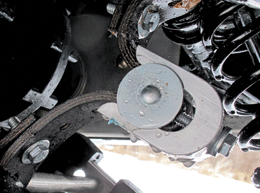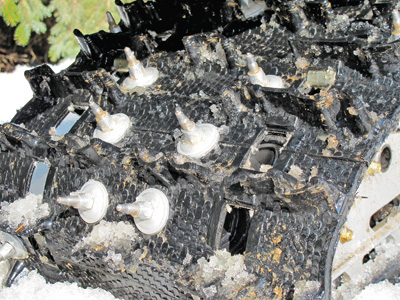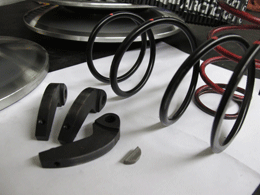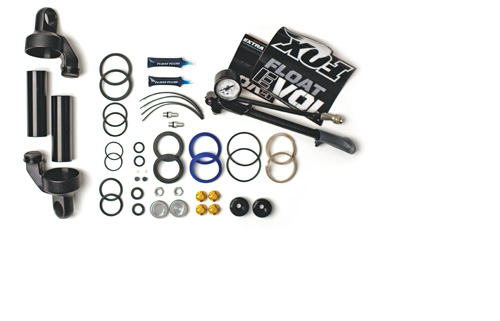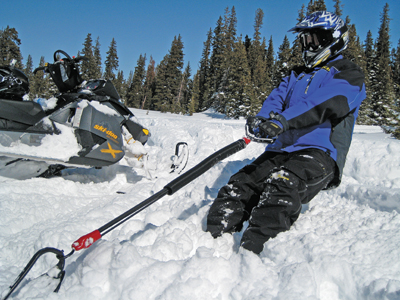 Heavy Hitter clutch weights ($229/set) allow a tuner to dial in a clutch by placing screws and washers in the arm where it will yield the best performance. Need a little more tip weight to tune top-end engine RPM? If you add the right amount, your sled’s tach will be pegged right where the engine makes peak horsepower.
Heavy Hitter clutch weights ($229/set) allow a tuner to dial in a clutch by placing screws and washers in the arm where it will yield the best performance. Need a little more tip weight to tune top-end engine RPM? If you add the right amount, your sled’s tach will be pegged right where the engine makes peak horsepower.
The cam arms are machined from a solid block of billet steel. This makes them more durable and reduces wear on the rollers, Thunder Products owner Lonn Peterson says. Fasteners are made from brass, steel and aluminum on fabricated on CNC machinery — they aren’t from a hardware store.
The most significant benefit we noticed from the Heavy Hitter weights is their reduction of the engine braking-effect, something we felt right away when we entered the first corner on our modified Yamaha. The sled had a “freeer” feel to it that made it easier and less tiring to drive. Reduced engine braking happened because there was less mass in the cam arms.

The stock arm in our Apex is 82.9 grams; the calibrated Heavy Hitter arms were only 53.1 grams, a difference of almost 30 grams! Centrifugal force increases as flyweights get heavier. That force pinches the belt so tightly that the primary clutch won’t let go quickly — backshift — when the driver lets off the throttle. On the flip side, not enough mass would cause an engine to over-rev, but Thunder Products gets away with significantly less weight because the arm profile is more aggressive.
Lonn Peterson has been marketing Heavy Hitters for about 15 years. They’re available for Arctic Cat, Polaris and Yamaha sleds; Thundershift Arms are available for Ski-Doo TRA clutches and they, too, can be customized to suit any sled and rider.
— Andy Swanson

